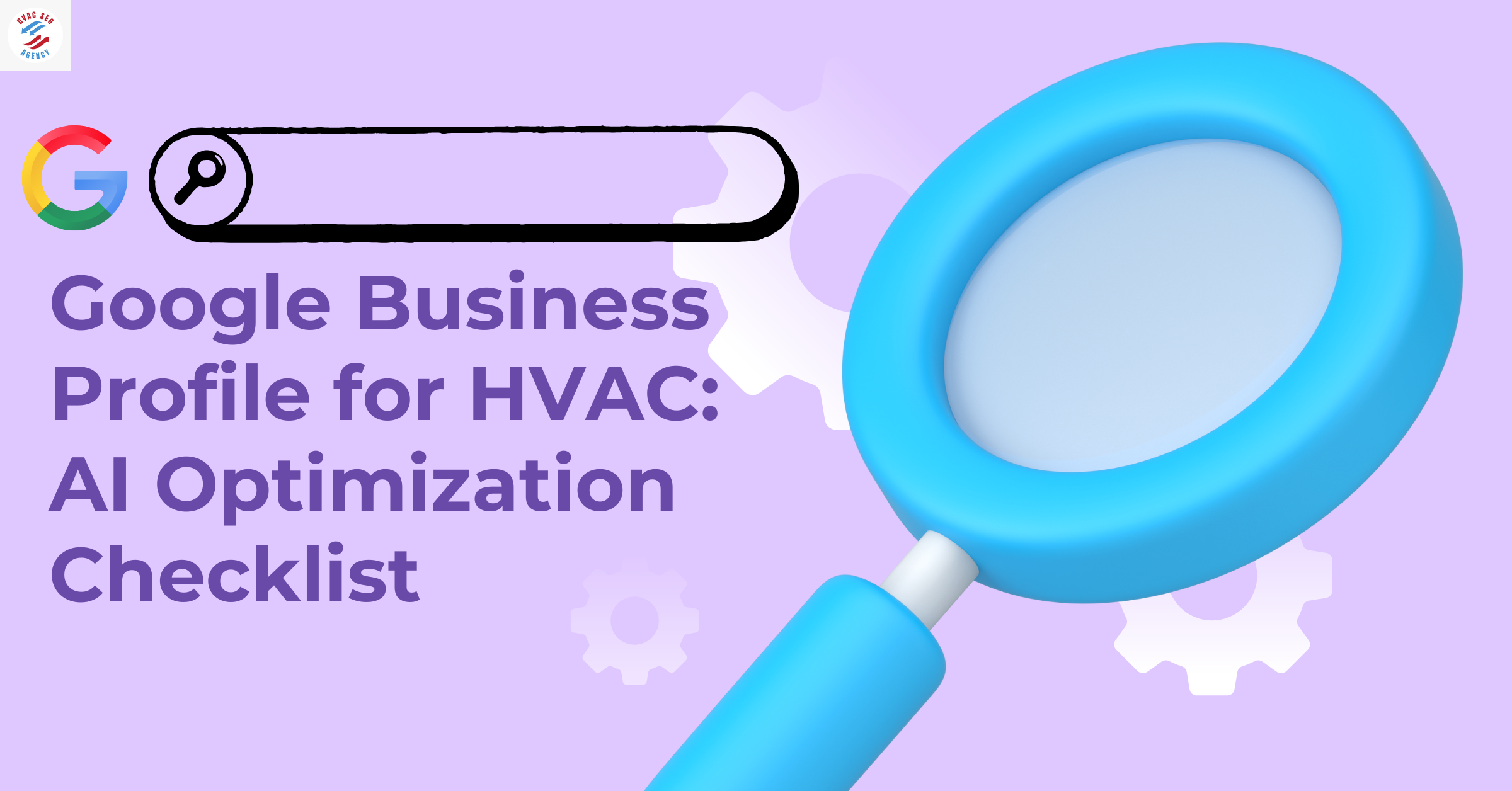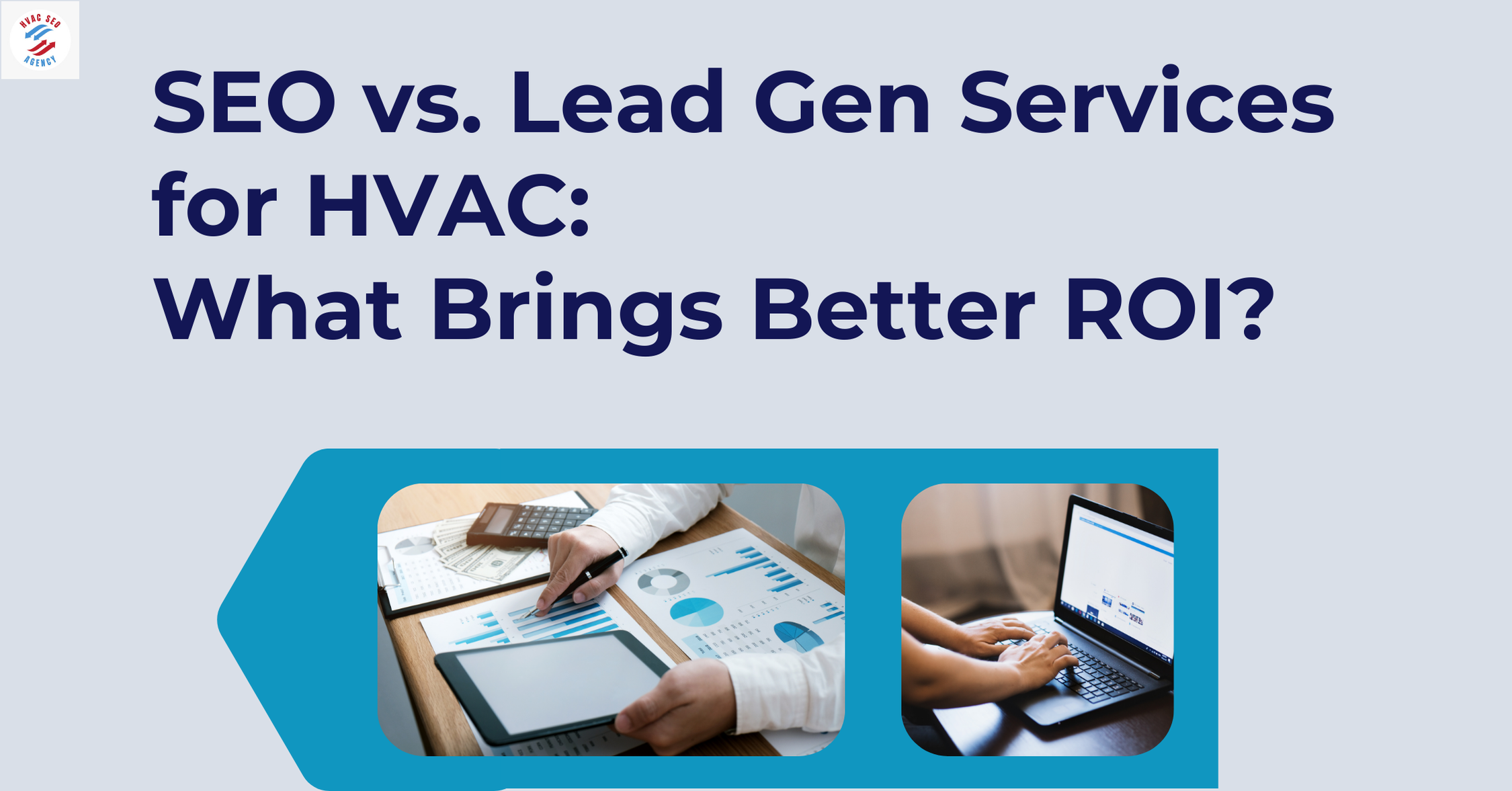How to Expand Your HVAC Business to New Locations

1.The Imperative of HVAC Business Expansion
The Heating, Ventilation, and Air Conditioning (HVAC) industry in the United States is experiencing significant growth. Projections indicate that the U.S. HVAC systems market, valued at approximately $30.41 billion in 2023, is expected to reach $49.70 billion by 2030, growing at a compound annual growth rate (CAGR) of 7.4% from 2024 to 2030. This robust expansion presents both opportunities and challenges for HVAC businesses aiming to scale their operations and enter new markets.
Table 1: U.S. HVAC Systems Market Growth (2024–2030)
| Year | Market Value (USD Billion) |
|---|---|
| 2024 | 32.46 |
| 2025 | 34.86 |
| 2026 | 37.45 |
| 2027 | 40.20 |
| 2028 | 43.14 |
| 2029 | 46.28 |
| 2030 | 49.70 |
Source: Grand View Research
Expanding an HVAC business into new locations requires a strategic approach to ensure sustainable growth and profitability. One critical aspect of this strategy is effective marketing, tailored to each specific market's unique characteristics. Collaborating with top HVAC marketing experts in Dallas can provide invaluable insights and localized strategies to penetrate new markets successfully. Partnering with an affordable HVAC SEO agency can further enhance your online presence, driving lead generation and revenue in these new territories.
In this comprehensive guide, we will explore the essential steps and considerations for HVAC business expansion, including market analysis, financial planning, workforce development, operational scaling, marketing strategies, technological integration, and the pivotal role of SEO in achieving business growth.
2. Optimizing Inventory Management to Reduce Wasted Costs
Effective inventory management is crucial for HVAC business expansion, directly impacting profitability and operational efficiency. By implementing best practices to manage HVAC inventory and reduce wasted costs, companies can ensure timely project completion, enhance customer satisfaction, and support sustainable growth.
Key Strategies for Effective HVAC Inventory Management:
Implement Inventory Management Software: Utilizing specialized software provides real-time tracking of parts and equipment, streamlining operations and reducing manual errors. This technology enables businesses to monitor stock levels accurately and automate reordering processes.
Conduct Regular Cycle Counts: Performing routine inventory checks helps maintain accuracy and identify discrepancies promptly. This practice minimizes the risk of stock outs or overstocking, ensuring that inventory levels align with actual usage.
Analyze Historical Data for Demand Forecasting: Examining past usage patterns allows businesses to predict future inventory needs more accurately. This proactive approach aids in maintaining optimal stock levels and reduces carrying costs.
Standardize Parts and Tools: Establishing uniformity in the parts and tools used across various projects simplifies inventory management and reduces complexity. This standardization leads to cost savings and improved efficiency.
Utilize Mobile Integration: Equipping technicians with mobile tools for inventory management ensures real-time updates and enhances field operations. This integration facilitates accurate tracking and reduces administrative burdens.
Statistical Insights:
Cost Reduction: Effective inventory management can reduce costs by up to 35%, directly contributing to increased profitability.
First-Time Fix Rates: Improved inventory control can enhance first-time fix rates by 45%, leading to higher customer satisfaction and reduced operational delays.
Table 2: Impact of Inventory Management on HVAC Business Performance
| Metric | Without Effective Management | With Effective Management | Improvement |
|---|---|---|---|
| Inventory Carrying Costs | High | Reduced | Up to 35% |
| First-Time Fix Rate | Low | High | Up to 45% |
| Stock out Occurrences | Frequent | Rare | Significant |
Source: Field proxy
Graph 1: Relationship Between Inventory Management Practices and Cost Savings
3.HVAC System Efficiency Ratings and Their Significance
When expanding your HVAC business to new locations, comprehending HVAC system efficiency ratings is crucial for selecting appropriate equipment, ensuring customer satisfaction, and adhering to regional energy standards. These ratings provide insights into the energy consumption and performance of HVAC systems, directly impacting operating costs and environmental footprint.
Key HVAC Efficiency Ratings:
Seasonal Energy Efficiency Ratio (SEER):
- Definition: Measures the cooling efficiency of air conditioners and heat pumps over a typical cooling season.
- Calculation: Total cooling output (BTUs) divided by total electrical energy input (watt-hours) during the cooling season.
- Interpretation: Higher SEER ratings indicate greater energy efficiency. For instance, upgrading from a SEER 9 to SEER 13 unit can reduce power consumption by approximately 30%.
Energy Efficiency Ratio (EER):
- Definition: Assesses the efficiency of cooling devices at a specific operating condition, typically at 95°F outdoor temperature and 80°F indoor temperature with 50% relative humidity.
- Calculation: Cooling output (BTUs) divided by electrical energy input (watt-hours) at a given operating point.
- Interpretation: Higher EER values signify more efficient equipment under specific conditions.
Heating Seasonal Performance Factor (HSPF):
- Definition: Evaluates the heating efficiency of heat pumps over an entire heating season.
- Calculation: Total heating output (BTUs) divided by total electrical energy consumed (watt-hours) during the heating season.
- Interpretation: A higher HSPF indicates a more efficient heat pump.
Coefficient of Performance (COP):
- Definition: Represents the ratio of useful heating or cooling provided to the work required, serving as a measure of efficiency.
- Calculation: Useful heating or cooling (BTUs) divided by the energy input (watt-hours).
- Interpretation: Higher COP values denote more efficient HVAC systems.
Regulatory Standards and Compliance:
Adhering to regional energy efficiency standards is vital when expanding HVAC operations. In the United States, the Department of Energy (DOE) has established minimum efficiency requirements:
Air Conditioners: As of 2023, the minimum SEER2 rating for air conditioners is 13.4.
Heat Pumps: Heat pumps must meet specific HSPF2 ratings, which vary by region and system capacity.
Benefits of High-Efficiency HVAC Systems:
Cost Savings: Investing in high-efficiency HVAC systems can lead to substantial energy cost reductions. For example, ENERGY STAR-rated appliances, including HVAC systems, are generally 20% more energy-efficient than non-certified models.
Environmental Impact: Efficient systems consume less energy, thereby reducing greenhouse gas emissions and promoting environmental sustainability.
Enhanced Performance: High-efficiency units often provide better temperature control and improved indoor air quality, leading to increased occupant comfort.
Table 3: Comparison of HVAC Efficiency Ratings
| Efficiency Rating | Measures | Calculation Method | Indicates |
|---|---|---|---|
| SEER | Cooling efficiency over a season | Total cooling output ÷ Total electrical input (seasonal) | Seasonal energy efficiency |
| EER | Cooling efficiency at specific conditions | Cooling output ÷ Electrical input (specific condition) | Instantaneous energy efficiency |
| HSPF | Heating efficiency over a season | Total heating output ÷ Total electrical input (seasonal) | Seasonal heating efficiency |
| COP | Heating or cooling efficiency | Useful heating or cooling ÷ Energy input | Instantaneous thermal efficiency |
Source: Seasonal energy efficiency ratio, Coefficient of performance
Graph 2: Impact of SEER Rating on Energy Consumption
4. Enhancing Your HVAC Website's SEO: Strategies for Improved Visibility
Expanding your HVAC business into new locations necessitates a robust online presence to attract potential customers. Optimizing your website for search engines is crucial in achieving this goal. Here are effective strategies to improve your HVAC website's SEO:
1. Conduct Comprehensive Keyword Research
Identify relevant keywords that potential customers use when searching for HVAC services. Incorporate these keywords naturally into your website's content, including service pages, blog posts, and meta descriptions. For example, targeting location-specific keywords like "HVAC repair in [City]" can enhance local search visibility.
2. Optimize On-Page SEO Elements
Ensure each page on your website has unique and descriptive title tags and meta descriptions that include target keywords. Use header tags (H1, H2, H3) to structure content, making it easier for search engines to understand your site's hierarchy and for users to navigate.
3. Improve Website Loading Speed
A fast-loading website enhances user experience and is favored by search engines. Optimize images, leverage browser caching, and consider using a Content Delivery Network (CDN) to reduce loading times.
4. Ensure Mobile-Friendliness
With a significant number of users accessing websites via mobile devices, having a responsive design is essential. Ensure your HVAC website is mobile-friendly to provide a seamless experience across all devices.
5. Create High-Quality, Relevant Content
Regularly publishing informative and engaging content, such as blog posts addressing common HVAC issues or maintenance tips, can position your business as an industry authority. This practice not only attracts visitors but also encourages them to spend more time on your site, positively impacting SEO.
6. Focus on Local SEO
Optimize your website for local searches by creating location-specific pages and claiming your Google Business Profile. Ensure your business name, address, and phone number (NAP) are consistent across all online platforms.
7. Build Quality Backlinks
Acquire backlinks from reputable websites to enhance your site's authority. This can be achieved through guest blogging, partnerships, or local business directories.
8. Utilize Social Media Platforms
Engage with your audience on social media to drive traffic to your website and improve brand visibility. Sharing valuable content can lead to increased shares and backlinks, boosting SEO efforts.
9. Monitor and Analyze Performance
Regularly use tools like Google Analytics to track your website's performance, identify areas for improvement, and adjust your SEO strategies accordingly.
Implementing these strategies can significantly improve your HVAC website's SEO, leading to increased visibility, higher search engine rankings, and more leads for your business.
5. Best Practices for Onboarding New HVAC Employees
Effective onboarding is crucial for integrating new HVAC employees into your organization, ensuring they understand their roles, and aligning them with company objectives. Implementing structured onboarding processes can lead to increased job satisfaction, improved performance, and reduced turnover. Here are key practices to consider:
1. Develop a Structured Onboarding Program
A comprehensive onboarding program introduces new hires to company policies, procedures, and culture. This includes safety protocols, technical training, and administrative processes. A well-organized program ensures consistency and helps employees acclimate quickly.
2. Assess Individual Skill Levels
Evaluate the existing skills of new employees to identify areas requiring additional training. This assessment allows for personalized development plans, ensuring each technician meets the company's standards and can perform their duties effectively.
3. Utilize Mentorship and Buddy Systems
Pairing new hires with experienced technicians facilitates knowledge transfer and provides support during the initial stages of employment. Mentorship fosters a sense of belonging and accelerates the learning process.
4. Incorporate Technology in Onboarding
Leveraging technology, such as AI-driven tools, can streamline administrative tasks, provide instant access to information, and enhance the onboarding experience. For example, companies like Hitachi have implemented AI digital assistants to reduce onboarding time and improve efficiency.
5. Provide Continuous Training Opportunities
Encourage ongoing education through workshops, certifications, and online courses. Continuous training keeps employees updated on industry advancements and enhances their skills, benefiting both the individual and the organization.
6. Foster Cultural Integration
Introduce new employees to the company's mission, values, and culture. Engaging them in team activities and company events promotes a sense of belonging and aligns them with organizational goals.
7. Set Clear Expectations and Goals
Clearly communicate job responsibilities, performance expectations, and career progression paths. Setting measurable goals provides direction and motivates employees to achieve excellence.
8. Gather Feedback and Continuously Improve
Solicit feedback from new hires regarding the onboarding process to identify areas for improvement. Continuous refinement of the onboarding program ensures it remains effective and responsive to employee needs.
Implementing these best practices for onboarding new HVAC employees can lead to a more competent, satisfied, and cohesive workforce, ultimately contributing to the successful expansion of your HVAC business.
6. Expanding Your HVAC Business: Key Strategies for Growth
As the HVAC industry in the U.S. continues to grow, businesses must adopt strategic expansion methods to scale operations efficiently while maintaining profitability. Here are key strategies for successful HVAC business expansion:
1. Identify High-Demand Markets
Expanding into high-growth regions ensures a steady demand for HVAC services. Research the following factors before choosing a new location:
- Climate trends: Warmer and colder states have higher HVAC service demands.
- Population growth: Expanding into fast-growing cities increases customer acquisition opportunities.
- Competitor analysis: Identify underserved areas with limited HVAC service providers.
Table: Top U.S. States for HVAC Business Growth (Based on Demand & Market Size)
| State | HVAC Market Size (2024, $Billion) | Annual Growth Rate | Key Demand Factors |
|---|---|---|---|
| Texas | 4.8 | 7.5% | Hot climate, urban expansion |
| Florida | 4.2 | 6.8% | High humidity, population growth |
| California | 5.1 | 7.0% | Strict energy regulations, new constructions |
| New York | 3.9 | 6.2% | Commercial HVAC demand |
| Arizona | 2.7 | 7.3% | Extreme temperatures, real estate growth |
Source: U.S. Department of Energy (DOE)
2. Build a Scalable Business Model
Your expansion strategy should align with your business model. The most effective approaches include:
- Opening New Branches: If you have a strong customer base, establish physical locations in targeted areas.
- Franchising: Allows for rapid expansion with lower risk while leveraging franchisees' local expertise.
- Acquiring Competitors: Buying out smaller HVAC companies in new regions can expedite market penetration.
Graph: Growth Comparison of HVAC Expansion Models (Franchising vs. Opening New Branches vs. Acquisitions)
3. Invest in HVAC Digital Marketing & SEO
A strong online presence is essential for attracting local customers in new areas. Partnering with an HVAC SEO Agency helps you:
- Rank higher in Google searches for HVAC services.
- Optimize local SEO to dominate searches in new service areas.
- Generate high-quality leads through paid advertising and content marketing.
Ways an HVAC SEO Agency Helps Scale HVAC Operations:
✔ Optimizes Google Business Profile for local search visibility
✔ Improves website rankings for "HVAC repair in [City]" searches
✔ Generates high-intent leads through SEO-focused content marketing
Case Study: A Florida-based HVAC company increased organic leads by 67% in 6 months after implementing an SEO-driven expansion strategy.
4. Streamline Operations with HVAC Business Software
Expanding to new locations requires optimized scheduling, dispatching, and customer management. Using HVAC business management software helps with:
- Automated scheduling to reduce technician downtime.
- Inventory tracking to prevent supply shortages.
- AI-driven customer insights to improve service efficiency.
Table: Best HVAC Business Software for Scaling Operations
| Software Name | Key Features | Best For |
|---|---|---|
| Service Titan | AI-powered scheduling, invoicing | Large HVAC companies |
| House call Pro | Mobile-friendly, dispatch automation | Small & mid-sized businesses |
| Jobber | CRM integration, job tracking | Field service operations |
| Field Edge | GPS tracking, inventory management | Multi-location HVAC businesses |
5. Strengthen Workforce Recruitment & Training
To scale successfully, you need a skilled workforce. The HVAC industry faces a labor shortage, making recruitment and retention crucial.
Best Practices for Hiring & Training New HVAC Technicians:
- Offer competitive salaries & benefits to attract top talent.
- Invest in certification programs (e.g., NATE certification).
- Use apprenticeship programs to train new hires effectively.
Graph: Projected HVAC Technician Shortage vs. Demand (2024-2030)
7. Leveraging Customer Reviews and Reputation Management for HVAC Business Growth
Building a strong reputation is critical for HVAC business expansion. Online reviews and reputation management directly impact customer trust, lead generation, and search engine rankings. Here’s how you can leverage customer feedback to scale HVAC operations successfully.
1. The Importance of Online Reviews in HVAC Business Expansion
- 93% of customers read online reviews before choosing a service provider.
- HVAC companies with 4.5-star ratings or higher attract 30% more customers than those with lower ratings.
- Google prioritizes businesses with high ratings in local search rankings, making online reviews a key factor for HVAC SEO success.
Key platforms where HVAC businesses need strong reviews:
✔ Google Business Profile (Most impactful for local SEO)
✔ Yelp & Angi (Angie’s List) (Popular for service-based businesses)
✔ Facebook Recommendations (Social proof & word-of-mouth marketing)
✔ BBB (Better Business Bureau) (Trust-building for large contracts)
Table: Impact of Review Ratings on HVAC Customer Acquisition
| Average Rating | Customer Conversion Rate (%) | Search Ranking Impact |
|---|---|---|
| 4.8 – 5.0 | 35% higher conversions | Strong SEO boost |
| 4.0 – 4.7 | 20% increase | Moderate impact |
| 3.0 – 3.9 | 10% increase | Low visibility |
| Below 3.0 | Negative impact | Poor rankings |
Source: Bright Local Consumer Review Survey 2024
2. How to Get More Positive HVAC Reviews
✔ Ask customers directly: After completing a job, request a review via email or SMS.
✔ Automate review collection: Use CRM software to send follow-up messages.
✔ Offer incentives: Provide small discounts or service upgrades in exchange for feedback.
✔ Respond to all reviews: Engaging with both positive and negative reviews improves credibility.
3. Managing Negative Reviews and Reputation Damage Control
✔ Stay professional: Never argue with customers online.
✔ Acknowledge and resolve issues quickly: Apologize and offer solutions.
✔ Encourage happy customers to leave reviews: More positive reviews push down negative ones.
Graph: How Responding to Reviews Improves Customer Retention
4. The Role of HVAC SEO in Reputation Management
- Google ranks HVAC businesses higher if they have consistent positive reviews.
- HVAC SEO Agencies help optimize Google Business Profiles to maximize review visibility.
- Local SEO strategies (NAP consistency, geo-tagging, and citation building) strengthen brand reputation online.
How an HVAC SEO Agency Helps with Online Reputation:
✔ Boosts your review ratings with automated review requests
✔ Improves search rankings through structured review integration
✔ Manages negative reviews & brand perception professionally
Table: SEO Impact of Customer Reviews on Google Rankings
| SEO Factor | Google Ranking Impact |
|---|---|
| Review Quantity | High |
| Review Rating Score | High |
| Response Rate to Reviews | Medium |
| Review Keywords Usage | Medium |
Source: Moz Local SEO Ranking Factors 2024
FAQs
1. What is the best strategy for HVAC business expansion?
The best strategy depends on your business model and market conditions. Some proven methods include:
- Opening new branches in high-demand areas
- Franchising to expand with lower investment risks
- Acquiring existing HVAC businesses to scale quickly
- Investing in local SEO and digital marketing to increase visibility
2. How does an HVAC SEO Agency help in business expansion?
An HVAC SEO Agency improves your online presence by:
- Optimizing your website for local searches
- Managing Google Business Profile to rank higher in service areas
- Generating more leads through targeted SEO and paid advertising
- Improving customer reviews & reputation management
3. How can I manage HVAC inventory efficiently while scaling operations?
To manage HVAC inventory & reduce wasted costs, businesses should:
- Use inventory management software to track parts and supplies
- Standardize equipment & tools to simplify operations
- Conduct regular inventory audits to prevent shortages
- Leverage AI-driven forecasting for demand prediction
4. What role do customer reviews play in HVAC business growth?
Online reviews directly influence customer trust and local SEO rankings. Businesses with higher ratings (4.5+ stars) attract 30% more customers. Responding to reviews and actively requesting feedback from satisfied customers enhances brand reputation.
5. How can I ensure a smooth onboarding process for new HVAC employees?
To streamline onboarding, HVAC companies should:
- Implement a structured training program
- Use a mentorship system for hands-on guidance
- Provide continuous learning opportunities
- Set clear job expectations and goals
6. What are the most important HVAC efficiency ratings for customers?
The key HVAC system efficiency ratings include:
- SEER (Seasonal Energy Efficiency Ratio) – Cooling efficiency
- EER (Energy Efficiency Ratio) – Efficiency under peak conditions
- HSPF (Heating Seasonal Performance Factor) – Heating efficiency
- COP (Coefficient of Performance) – Overall thermal efficiency
7. What are the biggest challenges in expanding an HVAC business?
- Labor shortages: Finding skilled HVAC technicians
- Market competition: Differentiating from other service providers
- High initial investment: Costs for new locations, equipment, and staff
- Regulatory compliance: Meeting local licensing and permit requirements
8. How does local SEO impact HVAC business growth?
Local SEO strategies help HVAC companies appear in search results when potential customers search for services in their area. Optimizing Google Business Profile, getting more reviews, and using location-based keywords drive more leads.
Conclusion
Expanding an HVAC business into new locations requires careful planning, the right technology, and a strong digital marketing strategy. By implementing these proven growth strategies, businesses can scale operations efficiently while maximizing profitability:
✔ Invest in HVAC SEO & digital marketing to dominate local search results
✔ Manage inventory effectively to reduce costs and increase operational efficiency
✔ Hire & train skilled HVAC employees to improve service quality
✔ Leverage customer reviews & reputation management to build trust
✔ Optimize business software & automation for seamless scaling






